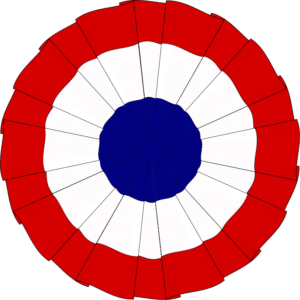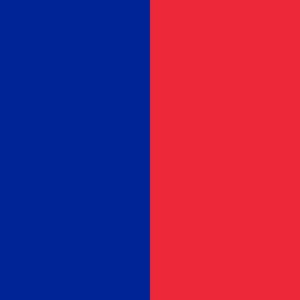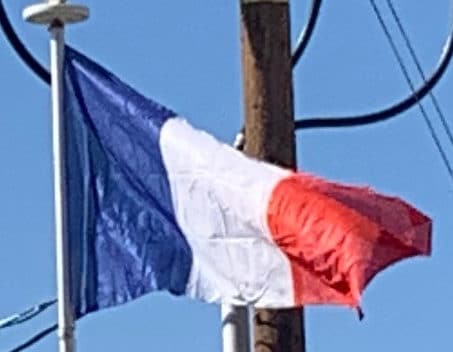
The royal government used many flags, the best known being a blue shield and gold fleur-de-lis (the Royal Arms of France) on a white background, or state flag.

Early in the French Revolution, the Paris militia, which played a prominent role in the storming of the Bastille, wore a cockade of blue and red, the city’s traditional colors. According to French general Gilbert du Motier, Marquis de Lafayette, white was the “ancient French color” and was added to the militia cockade to create a tricolor, or national, cockade of France.

This cockade became part of the uniform of the National Guard, which succeeded the militia and was commanded by Lafayette. The colors and design of the cockade are the basis of the Tricolor flag, adopted in 1790. The only difference was that the 1790 flag’s colors were reversed. A modified design by Jacques-Louis David was adopted in 1794. The royal white flag was used during the Bourbon restoration from 1815 to 1830; the tricolor was brought back after the July Revolution and has been used ever since 1830, except with a brief interruption for a few days in 1848.
Blue and red are the traditional colors of Paris, used on the city’s coat of arms.

Blue is identified with Saint Martin, red with Saint Denis. At the storming of the Bastille in 1789, the Paris militia wore blue and red cockades on their hats. White had long featured prominently on French flags and is described as the “ancient French color” by Lafayette. White was added to the “revolutionary” colors of the militia cockade to “nationalize” the design, thus creating the cockade of France. Although Lafayette identified the white stripe with the nation, other accounts identify it with the monarchy. Lafayette denied that the flag contains any reference to the red-and-white livery of the Duc d’Orléans. Despite this, Orléanists adopted the tricolor as their own.
Blue and red are associated with the Virgin Mary, the patroness of France, and were the colors of the oriflamme. The colors of the French flag may also represent the three main estates of the Ancien Régime (the clergy: white, the nobility: red and the bourgeoisie: blue). Blue, as the symbol of class, comes first and red, representing the nobility, comes last. Both extreme colors are situated on each side of white referring to a superior order.
Lafayette’s cockade of France was adopted in July 1789, a moment of national unity that soon faded. Royalists began wearing white cockades and flying white flags, while the Jacobins, and later the Socialists, flew the red flag. The tricolor, which combines royalist white with republican red, came to be seen as a symbol of moderation and of a nationalism that transcended factionalism.
The French government website states that the white field was the color of the king, while blue and red were the colors of Paris.
